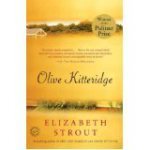K.B. Walker's Blog, page 7
August 14, 2012
Trevor “Two Hats” tips; writing humour for children and adults
 Trevor Belshaw is a fellow author at Crooked Cat Publishing. His adult novel, Tracey’s Hot Mail, had me giggling out loud. Released as an eBook in January 2012, Crooked Cat Publishing is bringing it out in paperback on August 24th.
Trevor Belshaw is a fellow author at Crooked Cat Publishing. His adult novel, Tracey’s Hot Mail, had me giggling out loud. Released as an eBook in January 2012, Crooked Cat Publishing is bringing it out in paperback on August 24th.
Trevor, what was t he inspiration for Tracey’s Hot Mail?
Tracy the character is a mixture of seven young women I sat behind on different buses over a three day period when my car was in for repair. The girls could have won gold for gossiping at the Olympics. They shared secrets about themselves, their bosses and their work colleagues as well as friends and relatives. They didn’t have the slightest concern about being overheard. The experience gave me a real insight into the world of 19-23 year old females. All of the girls were obsessed with fashion; one or two held grudges against workmates, two or three held grudges against their best friends and all of them hated their boss. I really couldn’t let this rich seam of gossip go to waste and by the weekend Tracy was born. She first appeared on a new writer’s site called, ‘Writelink,’ that I belonged to at the time. The first, Hi Emma email went down so well that by the following week I had written two more. The rest was written over the next ten months. When I was first asked who Tracy was, I replied with the following quote. I still think it sums her up perfectly.
Tracy is every girl on the bus, every girl who has a boss, every girl who works in an office. She’s the girl on the end of every lousy chat-up line. She’s the girl that older men fancy, the girl that has opinions on everything and everyone; even if those opinions are based solely on second or third hand information.
Do you have any advice for author’s trying to write humour?
I have heard a lot of writers say that they find it difficult to write humour. While I can’t say with any honesty that I find it easy, I don’t find it particularly difficult either. My first piece of advice would be, don’t force it. Make sure the setting is right and the main protagonists remain in character. The way the scene is set up is just as important as the punch line, if the reader doesn’t feel part of the set-up; they almost certainly won’t get the joke.
Humour can be gentle, brash, dry, or so off the wall that only a few people get it. While I do believe that anyone can write humour, it does have to be done properly. Just as in stand up or situation comedy, the timing has to be right. Personally I like to let my imagination go wild and see how far a situation can be pushed before it falls off the edge before I scale it back make it a little more believable. Another trick to utilise is the element of surprise. The laugh at the end of a sequence of events is always funnier if it is unexpected.
In my (still unfinished) web serial, The Westwich Writer’s Club, I set up a situation where a computer repair man and wannabe writer, Stephen, is called out to the home of the chairperson of his local writer’s group to help her with a computer problem. Margot, the chair, is a little drunk and the situation soon turns away from the faulty computer towards Margot’s silicon enhanced breasts and an Elk’s head with a missing glass eye. http://thewestwichwritersclub.blogspot.co.uk/2010/03/chapter-5-part-1.html
Everyone encounters humorous situations in their daily lives whether it’s at the shops, at work, listening to the kids. Take it in, think about where that situation could lead if it was allowed to continue, and take it from there.
Trevor has also written a number of books for children, under the name Trevor Forest. Do you find it difficult to write for two different markets?
I don’t find it difficult, personally speaking. I have two hats for writing and I always make sure I’m wearing the right one when I start. I have to get into the zone or it doesn’t work. When I write for kids I try to put myself in their place. I try to remember what excited me when I was ten. What I laughed at. What I found scary. What sort of adventure I used to imagine myself being caught up in. A writer has to get into that mind-set when they write for kids. Many people think writing for children is easier somehow. I always seem to get the same responses when people find out I write kids’ books.
‘That’s nice, are you going to write a proper book one day?’
‘Do you really? I’m going to write one when I have the time.’
For some reason, the consensus seems to be that writing for children is easier than writing for adults and that everyone has the next Harry Potter inside them.
My advice is, get rid of that thought. Kids’ books may sometimes be shorter, and the author can usually get away without laying out a massively complicated plot, but the writer will need to be just as adept at the craft as a writer of adult murder stories.
Children can spot when they are being spoken down to and you have to lure them into your newly created world from the first sentence or they won’t join you in it. Also remember, dialogue is just as important as storyline. Listen to how kids talk. They don’t see things the way adults do. Adults are the enemy in a way and kids don’t want to be like us. When children say they want to be a doctor when they grow up, they aren’t thinking about sitting in a stuffy surgery, dispensing prescriptions all day every day. They will see themselves finding miracle cures for incurable diseases. They’ll perform an emergency operation on a kitchen table; they want excitement, not conformity.
So the advice is, never dumb down and never preach. Kids hate that more than anything. Don’t try to come across as though you are one of them either. They know you aren’t, they know you are an adult. They don’t want you as a friend; they just want to be part of your adventure. It’s a fine balance but with a bit of practice you’ll find the right tone.
For me, adult writing comes second. I do enjoy it but time restraints due to work commitments mean that I have to ration my writing time and because I enjoy children’s writing more, I tend to give that priority.
When writing for adults I try to make the characters, believable and down to earth but I always give the main protagonist a little bit of quirkiness, just a little bit of something to set them apart from the crowd. I use a lot of dialogue to drive the book along and I’ll push a situation to the limit to wring the last bit of humour out of it. Not all of my characters are human, or even alive. I had great fun writing my other (still unfinished) web serial, The Diary of an Aspiring Adulteress, and introduced a plastic mermaid, in a fishpond, as a sounding board for the main character’s thoughts. http://aspiringadulteressdiary.blogspot.co.uk/2011/03/4th-march-2011-introduction.html
Many of the rave reviews for these books mention your wicked sense of humour. Is writing humour for children in any way a similar process as for adults?
I find them very similar. As I mentioned previously I have a massive sense of the ridiculous and you don’t have to be an adult to ‘get’ that. My humour is inspired by Tommy Cooper, Monty Python, Benny Hill, Spike Milligan and Billy Connolly. I adored the madness of the TV show The League of Gentlemen. The show is a fabulous mix of sketch, sitcom, horror and rural life. Anything can, and does, happen.
When I’m writing, I tend to let my imagination run riot and just go with the flow. If a scene isn’t working I don’t agonise over it for weeks. For me, humour has to be instantaneous, it’s either funny or it isn’t. If something doesn’t work, it gets cut pretty quickly and I try a different scenario, even if something has to happen to keep the plot alive.
I’ve written a non-fiction memoir, A Life Less Lost, as well as a novel, Once Removed, both under the same pen name. Why did you use different names for your adult and children’s books?
Mainly because of the adult nature of Tracy’s Hot Mail, The Diary of an Aspiring Adulteress and The Westwich Writer’s Club. I don’t feel I can allow children’s books to be sold alongside the adult themed stories.
I really don’t want kids to pick up a copy of Tracy’s Hot Mail and think they’re going to get a dollop of Magic Molly or Stanley Stickle. Trevor Belshaw and Trevor Forest write for completely different markets. They have to be seen as different people.
You wrote a very funny extra short story about Tracey and the Jubilee, which you offered for free. Do you think it stimulated sales for Tracey’s Hot Mail?
I’d like to think so. I wrote it at a time when people were busy doing Jubilee things and it did get a very good reaction. It was written to give people who were unaware of Tracy, a glimpse into the character. I’m very pleased with how it turned out. I’m thinking of doing another one for the end of the Olympics.
The sequel to Tracy’s Hot Mail, Tracy’s Celebrity Hot Mail, is partly written and will hopefully surface before too long. It will tell the story of what happens to Tracy after she is made redundant from her little job in the office.
Thanks for having me, Kim. I hope your readers find something of interest in this.
Tracy’s Hot Mail is published by Crooked Cat Publishing http://www.crookedcatbooks.com The book is available on Kindle http://amzn.to/M9ajwI and for all other e-Readers like the Nook, iPad etc. https://www.smashwords.com/books/view/123781
More information can be found on Trevor’s blog; http://www.trevorbelshaw.com/blog and his Trevor Forest website can be found at http://www.trevorforest.com All his children’s books have been published in Kindle format and all will be available in paperback by the end of August 2012. All of Trevor Forest’s books can be purchased from this link. http://amzn.to/LS479X
All Trevor Forest books are available on the Kindle. http://amzn.to/IYMC6d
Stanley Stickle Hates Homework. The new book from Trevor Forest.https://www.amazon.co.uk/dp/B006NM2750 Peggy Larkin’s War, Abigail Pink’s Angel, Magic Molly and Faylinn Frost and the Snow Fairies available in paperback and eBook at my book store. http://bit.ly/fWVFKt
Short stories available at http://www.etherbooks.com via Iphone app.
Related articles
Meet Trevor Belshaw… (creativegibberish.wordpress.com)
Humour (isisixworth.wordpress.com)


August 11, 2012
Crooked {Cat} News!
 Crooked {Cat} is an independent publishing company based in the UK. A young company, they are full of fire and determination, working tirelessly to find the best in new writing and devoting time and expertise to polishing and presenting their books to the world. Originally producing e-books only, they are now branching out into paperbacks, too.
Crooked {Cat} is an independent publishing company based in the UK. A young company, they are full of fire and determination, working tirelessly to find the best in new writing and devoting time and expertise to polishing and presenting their books to the world. Originally producing e-books only, they are now branching out into paperbacks, too.
Crooked {Cat} Publishing have a new site called Crooked Cat Books. The normal ‘publishing’ one is where you’ll find details of authors, their blog, and submission guidelines (so is aimed more at writers), http://crookedcatpublishing.com/. The new ‘books’ one is aimed at readers and reviewers, and other interested people. Of course, along the way, the two will, no doubt, mix a little and each has a link to the other.
The address for the new bookshop is: http://www.crookedcatbooks.com/
Folks can:
* Buy ebooks direct from the site in multi-e-formats
* Collect reward points for each purchase, and put these towards the purchase of a future ebook
* Review and rate books
* Add books to a wishlist and return to the list later
* Buy and send gift vouchers
* View ‘Specials’ – reduced, promotional, collected or otherwise timely items
* Share through social media channels links to their favourite book
* Sign up to Crooked Cat affiliates, which gives them a code-link. When people click through and buy through this link, the affiliate will get a percentage of sales
* View extra downloadable stuff that they won’t see elsewhere – photos, audio, video and other cool bits and pieces
* Other brilliant stuff that you’ll have to wait for…
They would love you to sign up, interact, leave reviews and rate things.
Once Removed and lots of other great reads, across a range of genres, can be purchased at reasonable prices so it’s well worth having a look.
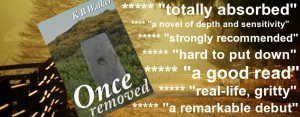
Related articles
Call for Subs: Crooked Cat (aknifeandaquill.wordpress.com)
Meet Trevor Belshaw… (creativegibberish.wordpress.com)
The Farther Shores of Historical Fiction. (nutsandcrisps.wordpress.com)
A Novel in a week?!* (nutsandcrisps.wordpress.com)


August 3, 2012
Sculpting butter in the sun
Sculpting butter in the sun or what is poetry?

Photo credit: liber(the poet)
Looking for a definition of poetry, Wikipedia explains that virtually anything goes and poetry probably predates literacy because oral traditions used poetic forms to aid memorization and transmission.
Is it possible that it’s this very capturing-smoke-in-a-sieve vagueness about poetry that makes most people afraid of it? After all, how do we know if we’ve done it “right”?
The essence of a good poem, like music, dance or visual arts, is its ability to speak directly into our hearts beyond the confines of the actual words.
As an infant teacher, I loved “teaching” the children to write poetry, using ideas from The Poetry Society website http://www.poetrysociety.org.uk/content/homepage/. In the spirit of writing for a purpose, I often asked the children to write poems for their mums to include in their Mothers’ Day cards. Although they were only 6 or 7 years old, their poems were very personal and cherished by their mums. One summer, tragedy struck the family of one of my pupils. At the little girl’s funeral, her brother’s Mothers’ Day poem was read out. It was such a simple and perfect expression of love.

Robert Frost
Recently, I was asked to give a talk on “How to Cope With a Death in the Family”, a very daunting task. Three poems, Home Burial by Robert Frost,
Do not stand at my grave and weep by Mary Elizabeth Frye and She is Gone by an anonymous author, along with excerpts from my memoir, A Life Less Lost, gave me the framework.
I have written poetry for myself since I was a child. Because I mainly read novels that form is what I’m most comfortable working in. But a few of my poems have been published and when my son and future daughter-in-law asked me to write a poem for their wedding, I was thrilled and terrified. Currently, I’m working on a poem as a gift for my dad’s 80th birthday.
So don’t be afraid. Let the fact that there isn’t a right way to do it free you to have-a-go. And if you do, you might be interested in this message from Michael Stewart on behalf of the Grist Poetry Anthology:
As an antidote to Olympic fever, we at Grist are running a free poetry comp for the duration of the games. There will be cash prizes for gold, silver and bronze winners. Full info here: http://headspam.posterous.com/the-grist-100-meter-sprint
Related articles
Focus On: Fiction and Poetry Blogs (dailypost.wordpress.com)
Poetry Games: Cast Your Vote! (npr.org)


July 27, 2012
Synopsis writing workshop, suitable for writers’ groups
Select a well-known novel that everyone has either read or seen the film (Wizard of Oz, Sound of Music, or similar). Split the group into 4 subgroups and give each a set of questions from one of the first 4 steps below. Each group will work together to answer their 4 questions. Put the answers to each question on a separate card or paper.
Step 1 Plot Basics
What is the inciting incident?
What events obstruct the story goal?
What is the decisive event at the climax of the story?
Describe the resolution?
Step 2 Main Character’s Arc
Describe the main character at the start of the story.
Describe how the MC is thrust into a situation where they are pressured to change.
Does the MC change, adopt a new approach, take uncharacteristic action or become more entrenched in attitude and approach?
At the end of the novel, is the mc better off because of their choices? Does the reader feel the MC has done the right thing?
Step 3 Consider the Impact Character’s Role (The IC, or characters, provide the pressure for change)
How does the IC express a different approach or attitude to the MC?
How does the IC pressure of influence the MC to either abandon his old ways or learn a new way of doing things?
At the climax, does the IC or the MC change and how is this illustrated?
Is the IC better or worse off at the end of the novel?
Step 4 The Major Relationship
What is the relationship at the beginning of the story?
How does the relationship develop or is tested during the story?
What happens at the climax (what is the decisive change)?
What is the relationship at the end of the story?
Part 2
Share and discuss the answers from part 1. Together, work on Step 5.
Step 5: Include Thematic Considerations
Consider any issues, themes, messages and or morals of the story. If they are a crucial part of the novel, write them on separate pieces of paper.
Part 3
Collect all the number one questions and answers together (beginning of the story), number twos and so on. Finally put the step 5 notes into the appropriate piles depending on where they’re illustrated in the story.
Each group to compose a paragraph or paragraphs of the synopsis, which covers the portion of the story they’ve been given.
Important points:
“All synopses are told in omniscient present tense. There are no exceptions to this rule.” Sheila Kelly
Always check the publisher’s guidelines for format, length and content, as what is required in a synopsis varies a great deal.
Do not staple or fasten pages together. Include a header/footer on every page with page number, author’s last name and title.
Do not use excess adverbs and adjectives.
“Present ideas in as short a form as possible. Example: “She was raised by nuns until she came of age to inherit her family fortune” can be converted into “convent-schooled heiress.” Sheila Kelly
Study TV guide & movie listings – this sounds funny, but it’s an excellent way to learn how to condense. Hollywood can reduce a two-hour movie into a single ten-word sentence and still make it sound exciting. Sheila Kelly
Go on the internet and critically analyse sample synopses
“The biggest mistake most people make when they try to write a synopsis for the first time is to create a bare bones plot summary, along the lines of “First this happens, then this happens, then this happens…” Synopses written this way tend to be so dry and boring even the author would have trouble understanding why anyone would want to read the full novel.” Glen C Strathy
Information, for this workshop, was taken from Writing the Novel Synopsis by Sheila Kelly and How to Write a Synopsis of Your Novel by Glen C. Strathy and From Pitch to Publication by Carole Blake.
Related articles
Character Arcs, Plot Lines, and the Synopsis, oh my (shannondonnelly.com)
The Joy of Outlining II (darcknyt.wordpress.com)


July 24, 2012
The Further Shores of Historical Fiction
The Farther Shores of Historical Fiction.

La Hougue Bie Photo credit: Man Vyi
Is it possible to write historical fiction where there is no history to base it on? If a writer wishes to set a story in prehistoric times, he or she has to find a way through this dilemma. When I came to write my novel, Undreamed Shores[i] (set between Southern England, Northern France and the Channel Islands in c2400 BC), I was consciously inspired by writers such as William Golding (The Inheritors, Faber & Faber 1955) and Elizabeth Marshall Thomas (Reindeer Moon, William Collins 1987), but still had to find my own way of approaching the task. Where history has nothing to say, one falls back on archaeology – an easy option for me, since I have a PhD in the subject, and have taught it in various universities for many years. Many of the places in Undreamed Shoresare based on real archaeological sites, and many of the objects mentioned can be seen in museums. Even some of the characters are based on skeletons excavated by archaeologists. In all of these cases, I have tried to be as faithful as possible to the evidence as I understand it.
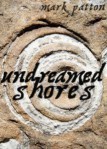
Undreamed Shores
Archaeology, however, only takes us so far, and not nearly as far as a novelist wishes to go. It tells us nothing of the languages spoken in prehistory, of the etiquette of prehistoric peoples or their modes of courtship. It has little enough to say about their clothing, the way they dressed their hair, the sorts of medicines they used, the sort of music they enjoyed. Some of this, of course, I simply made up (it’s what fiction writers do, after all), but I drew inspiration from a variety of disciplines, ranging from social anthropology to linguistics, herbalism, the psychology of myth, the craft of oral story-telling. The story-teller, Sally Pomme Clayton; natural food expert, Robin Harford; and survival guru, Ray Mears probably all deserved credits in a list of acknowledgements that could easily have got out of hand. I drew also on my personal experiences, especially in my youth – sailing, open-water swimming, hiking, bird-watching – the reader will easily spot these!

Ancient hair clasps
A lot of my inspiration came from the countryside, which one might almost consider a character in the book (my characters walk from Chesil Beach to Stonehenge, and I actually did the walk myself, making copious notes along the way about the plants, birds and animals that I encountered) but, as a Londoner, I also took full advantage of the museums that enrich our lives in the capital. The lyre played by one of my characters is based on an Ethiopian lyre in the Horniman; the painted jackets that some characters wear are based on Native American examples in the British Museum; even the map which plays a crucial part in the plot is based on an object in the British Museum – one of the earliest maps made in the Americas.
Novelists draw inspiration from anywhere and everywhere, and this is as true with the remote past as it is with contemporary fiction.
[i] Undreamed Shores is published by Crooked Cat Publications, 2012. (http://www.amazon.co.uk/Undreamed-Shores-ebook/dp/B0084UZ530/ref=sr_1_6?ie=UTF8&qid=1337840626&sr=8-6)
Related articles, if you’d like some inspiration for your historical fiction:
Prehistoric axe is Britain’s top treasure (telegraph.co.uk)
X-rays reveal secrets of Roman coins (guardian.co.uk)
Excavations reveal the forgotten cultural treasures of Sidon’s past (dailystar.com.lb)


July 23, 2012
Breaking the Rules
Last week, I spent time researching and putting together a writers’ workshop designed to help authors write the dreaded synopsis. It’s a crucial tool in getting published but often neglected on courses and in writers’ groups. There are plenty of rules to follow, if you want it to be effective.
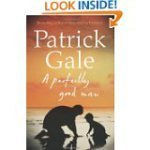 Coincidentally, I finished reading A Perfectly Good Man by Patrick Gale yesterday. I can’t imagine what his synopsis for this book would look like, as it breaks all the rules of story structure. Each chapter explores a different character at different times over a span of 60+ years, leaping backwards and forwards from the inciting event. Seven characters are looked at in depth with others important to the story included under their umbrellas.
Coincidentally, I finished reading A Perfectly Good Man by Patrick Gale yesterday. I can’t imagine what his synopsis for this book would look like, as it breaks all the rules of story structure. Each chapter explores a different character at different times over a span of 60+ years, leaping backwards and forwards from the inciting event. Seven characters are looked at in depth with others important to the story included under their umbrellas.
It put me in mind of a book I read a few years ago called Olive Kitteridge. It was a novel but also a collection of short stories, each about a different character. The reader grew to understand the central character, Olive, and her story through the lives and observations of these others.
Writers are told to avoid having too many important characters and that you need a beginning, middle and end. Despite breaking these rules both books worked. The authors were so skilled; their characters came alive in my imagination. For all their flaws, I cared about them. Reading both books felt like doing a puzzle. Each chapter revealed another random piece until, gradually, the whole was revealed. Neither has the drive and pace of a thriller or crime novel but they are quietly compulsive.
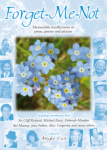 Novels are what I read most and prefer to write but I’ve also written short stories, poems, plays and articles, submitting some for publication and/or competitions. This, I’m told, is good practice because it’s challenging and improves a writer’s skills. I once entered a short story competition with a piece inspired by my mother-in-law. Although told it wasn’t really a short story in the traditional sense, it won first prize and has since gone on to be included in the soon to be launched Forget-Me-Not memory book to raise money for Alzheimer’s Research UK.
Novels are what I read most and prefer to write but I’ve also written short stories, poems, plays and articles, submitting some for publication and/or competitions. This, I’m told, is good practice because it’s challenging and improves a writer’s skills. I once entered a short story competition with a piece inspired by my mother-in-law. Although told it wasn’t really a short story in the traditional sense, it won first prize and has since gone on to be included in the soon to be launched Forget-Me-Not memory book to raise money for Alzheimer’s Research UK.
I think my story worked because it was written from love and personal experience so people could relate to it. Like any art form, you need to understand the rules before you can break them and be skilled enough to pull it off.
Related articles
Remember your math teacher? – Olive Kitteridge by Elizabeth Strout (bookrhapsody.wordpress.com)
20 Things I Learnt From An Agent (the-view-outside.com)
An Unlikely Lesson in Synopsis Writing (parkinglotconfessional.com)
Writing a Synopsis: Some Things I’ve Learned (julietmadison.wordpress.com)


July 21, 2012
Winner!

She’s a winner (Photo credit: nick farnhill)
Just realised I had to contact Rafflecopter to discover the winner for my Once Removed giveaway ~ whoops! Well, it was an experiment.
The winner is Sarah Collie! Congratulations, Sarah, and I hope you’ll enjoy your prize.
Now that I’ve tested the system and learned how to use it, I’d be delighted to invite other authors to share their writing tips and (optional) offer a promotional giveaway of their books.




